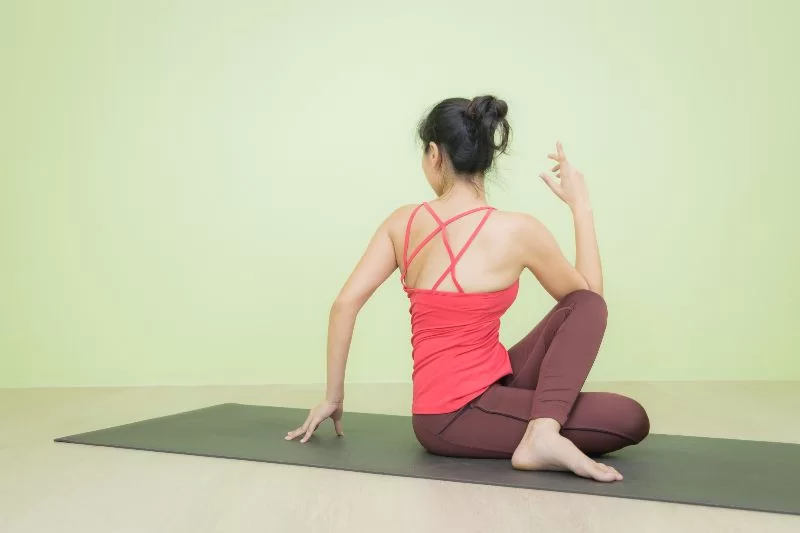Diabetes, particularly type 2 diabetes, has become one of the most widespread health concerns worldwide. Sedentary lifestyles, unhealthy diets, and chronic stress have all contributed to its rising numbers. Yet, research continues to reveal that regular physical activity, especially holistic practices like yoga, can significantly reduce the risk of developing diabetes. In fact, studies have shown that practicing yoga daily may lower the risk by nearly 50%. But how does this ancient practice have such a powerful impact on modern-day metabolic health? Let’s explore.
Understanding the Link Between Lifestyle and Diabetes
Type 2 diabetes primarily occurs when the body becomes resistant to insulin or the pancreas fails to produce enough insulin to maintain normal blood sugar levels. Key contributors include poor diet, physical inactivity, obesity, and prolonged stress. Unlike other chronic conditions, type 2 diabetes is largely preventable and, in many cases, manageable with consistent lifestyle changes. Yoga, with its combination of movement, breathwork, and mindfulness, addresses several of the root causes of diabetes simultaneously.
Yoga’s Role in Blood Sugar Regulation
Daily yoga practice positively influences blood sugar levels in several ways:
- Improves insulin sensitivity
Yoga enhances the body’s ability to use insulin effectively. Specific postures, especially twisting poses, gentle forward bends, and abdominal exercises, stimulate the pancreas, helping it function more efficiently. - Encourages weight management
Obesity is one of the strongest risk factors for type 2 diabetes. Regular yoga practice helps in burning calories, improving metabolism, and promoting lean muscle mass. Even slower styles of yoga can support steady weight loss by reducing stress-driven eating habits. - Balances hormone levels
Hormonal imbalances, especially those caused by chronic stress and poor sleep, can lead to elevated blood sugar. Yoga helps regulate cortisol (the stress hormone) and other hormones involved in metabolism, keeping glucose levels stable.
Stress Reduction: A Key Factor
Chronic stress is often underestimated in its role in diabetes risk. Stress triggers the release of cortisol and adrenaline, hormones that raise blood sugar levels as part of the body’s “fight-or-flight” response. Prolonged high stress keeps blood sugar elevated, contributing to insulin resistance. Yoga, with its deep breathing exercises and meditative elements, is a proven stress-buster. Regular practice calms the nervous system, lowers cortisol levels, and promotes a sense of mental clarity, reducing one of the key hidden drivers of diabetes.
Types of Yoga Most Beneficial for Diabetes Prevention
While all forms of yoga offer health benefits, some styles are particularly effective for blood sugar control:
- Hatha Yoga: Gentle postures that improve flexibility, circulation, and relaxation, making it ideal for beginners.
- Vinyasa or Flow Yoga: Dynamic movements that provide cardiovascular benefits and help burn calories.
- Restorative Yoga: Focuses on relaxation, stress relief, and nervous system healing, crucial for blood sugar stability.
- Pranayama (Breathing Exercises): Techniques like alternate nostril breathing and deep diaphragmatic breathing regulate stress hormones and oxygenate the body, enhancing insulin sensitivity.
Additional Health Benefits
Aside from lowering the risk of diabetes, yoga offers a holistic boost to overall well-being. It improves digestion, promotes better sleep, strengthens muscles and joints, and enhances heart health. By fostering a deeper mind-body connection, yoga also makes individuals more conscious of their lifestyle choices, encouraging healthier eating and regular self-care routines.
Practical Tips for Getting Started
- Start small and stay consistent: Aim for at least 20–30 minutes of daily practice. Even short, focused sessions can bring noticeable improvements.
- Combine yoga with mindful eating: Pairing yoga with a balanced diet rich in whole foods and fiber magnifies its preventive effects.
- Focus on stress management: Incorporate meditation and breathing exercises to maximize cortisol reduction.
- Seek guidance: Beginners can benefit from online tutorials, yoga apps, or in-person classes to learn proper techniques and avoid injuries.
Scientific Backing
Several studies have shown that individuals who practice yoga regularly exhibit improved insulin sensitivity, better lipid profiles, and lower fasting blood sugar levels. Some research even suggests that yoga practitioners are up to 40–50% less likely to develop type 2 diabetes compared to sedentary individuals. These findings underline the transformative impact of integrating yoga into daily life.
Final Thoughts
Yoga is more than a physical workout; it’s a holistic approach to wellness that tackles multiple risk factors for type 2 diabetes simultaneously. By improving insulin sensitivity, promoting weight management, reducing stress, and encouraging mindful living, daily yoga practice can almost halve your risk of developing diabetes. Best of all, yoga is accessible to people of all ages and fitness levels, requiring little more than a mat and a willingness to show up each day.
So, if you’re looking to protect your health and enjoy a calmer, more balanced life, unroll your mat, take a deep breath, and let yoga become your daily shield against diabetes.
Do Follow Us On Instagram







